
I will be showing prints of my favorite “Security” photographs, that I’ve taken during my time here in Trinidad. I’m hoping to measure the new iron doors to the building at the end of the driveway in Alice Yard, and see if it’s construction, purposely designed as a display area, will work with my prints. This to me, is the most suitable area to show my photographs, as the structure itself is both a door and a gate, and is meant to keep people out of an area as much as it is meant to lead people into an area,
and perhaps display artwork the entire time! I’m going to experiment with having it open, though this picture here shows it shut.
If Jeanika still intends to use the loft space of that building to show case some of her work, and if Andrea would be willing to use the downstairs area of that building, than posting my photographs on the outside would lend a continuity to my display when I use the white box for projection, as the gate/door/display is in the same line of sight, but can also be used to lead viewers to the other two artists’ works.
Now, I’ve been concerned lately that the only portion of my work that this interesting to anyone is this experimental performance/project. I’m not particularly pleased that the only thing people know about my efforts this semester is that I plan to get naked. It’s a little disheartening to realize that the interests and efforts that I’ve put in before hesitantly announcing this other idea are completely ignored, but it’s unfortunately not something I can control. For this reason, I like the idea of prominently displaying my photographs on that gate/door/display area, as it would be an arresting sight, and the first thing that people would see as they walk into the space.
But I can’t devote all my time and energies to those photographs, since I’ve also committed to this performance/project. I am going to project the stop motion videos simultaneously, on different walls
in the white box. Initially, I was concerned that overlapping beams of lights from the projects would skew the image on the walls. While this would be an interesting effect to play with, I’m more invested in projecting three videos at the same time. I like the idea of playing with the concept that a photograph is a specific, single record of a moment in time. I would be bending and playing with this in a way, by projecting three moving images of the same moment.
If I can utilize an artist here, and incorporate external flash, I’d like to figure out the timing in each video so that each flash is projected at the same time, whiting out the space, and then editing the videos so that the three perspectives shift after the white out. This will involve some complications for me, seeing as how my knowledge of iMovie or another other movie making software is rather limited. I do however, think that I can make this work, and am I’m really looking forward to trying!
Rummaging through fabric and prying the lids of some paint buckets has also been fruitful, in light of this performance/project.
I found red, blue and white body paint in the Program House, which, miraculously, are the colors (well, red and blue) that I wanted to work with in the first conceptualization of this performance/project. There is a little more red paint than blue, so I’m thinking of mixing the white and blue for a lighter hue of blue. This works out well, since a big portion of what interests me in regards to the paint is the mixing that will happen on my body and on the fabric.
The fabrics that I found pose some interesting possibilities. I’ve found a lot of an extremely sheer, slightly shiny fabric, cotton sheets, and a mesh, which is similar to the fabric that basketball/athletic shorts are made of. Tomorrow I plan to test the paint on a small sample of each fabric, and to see how layering might effect the look I’m trying to achieve.
This performance/project will be set up in the space that is shown in the following photograph. I will be suspending the sheer cloth to the upper trellis, above the driveway, as a sort of “ceiling,” and will be creating “walls” with the remaining fabrics.
I’m looking to create a visually stunning tunnel of white, which will taper off in size as it approaches the door/gate/display area that I spoke of previously.
I will be sure to document these steps visually tomorrow, as I attempt to realize what so far, has only existed in my mind! Look for those updates Monday.

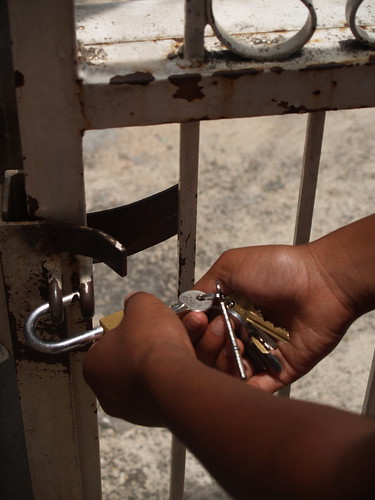

 Intervention 0: Following an evening social event, the couches were already arranged in a living room style, facing the television. The long couch acted as a room divider and was backed by a long fold-out table with a few chairs near to the entrance. I wondered what class would be like in an informal living room setting and contemplated moving the couches to face the blank wall with the white board rather than the television set. I was given permission from the directors to leave the setup for the Wednesday class, but Tony Hall disagreed and removed the tables completely, fixing the sturdy blue chairs in the usual large circle. Two program students later mentioned that the couch setting would have been too comfortable anyway and they wouldn’t have been able to concentrate on the lecture. This prompted the question: What is more important, comfort or effectiveness? Should a classroom have a balance of both? Is this factor decided by the user or the environment?
Intervention 0: Following an evening social event, the couches were already arranged in a living room style, facing the television. The long couch acted as a room divider and was backed by a long fold-out table with a few chairs near to the entrance. I wondered what class would be like in an informal living room setting and contemplated moving the couches to face the blank wall with the white board rather than the television set. I was given permission from the directors to leave the setup for the Wednesday class, but Tony Hall disagreed and removed the tables completely, fixing the sturdy blue chairs in the usual large circle. Two program students later mentioned that the couch setting would have been too comfortable anyway and they wouldn’t have been able to concentrate on the lecture. This prompted the question: What is more important, comfort or effectiveness? Should a classroom have a balance of both? Is this factor decided by the user or the environment? 

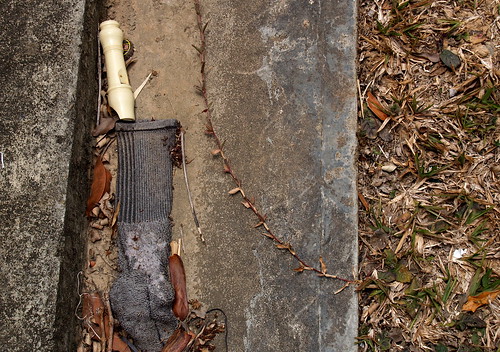


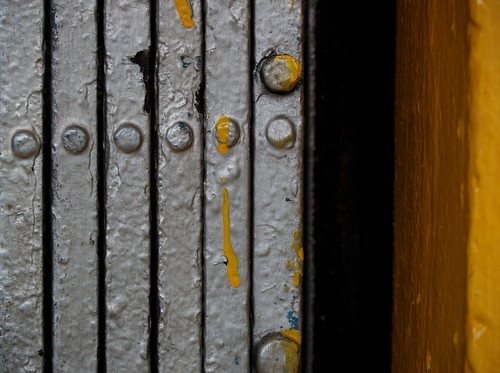
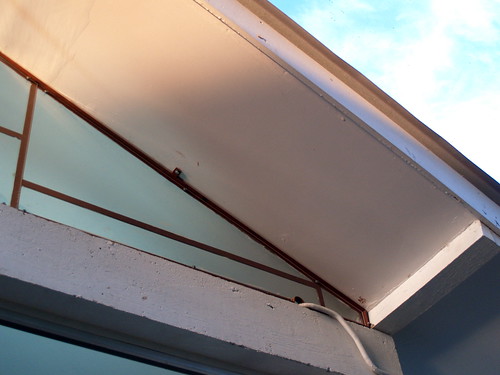



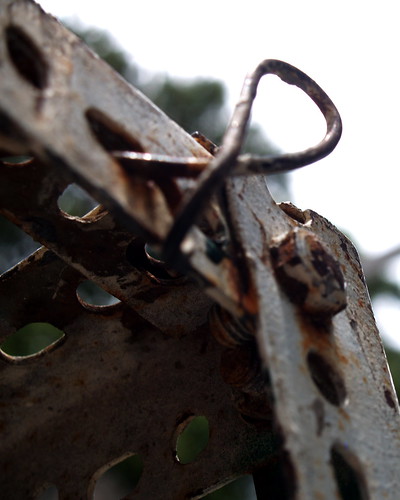
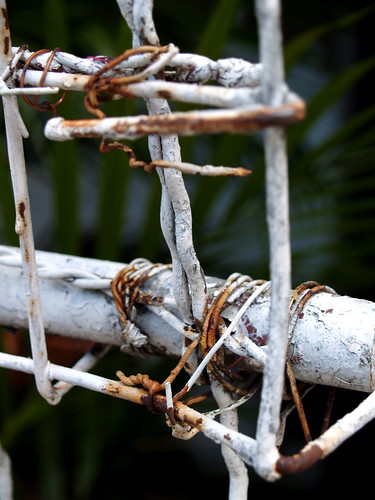


 In observing how people use the space, and how I wish the building could be used, Nikki also mentioned that I should try to photograph people using the space in various ways. It would be interesting to note how its uses change with the day of the week or if my physical arrangement impacts how it is used. I’ve even gotten permission to leave the ‘living room’ couch set up for class on Wednesday, so we’ll see how the arrangement changes the classroom environment and group dynamics.
In observing how people use the space, and how I wish the building could be used, Nikki also mentioned that I should try to photograph people using the space in various ways. It would be interesting to note how its uses change with the day of the week or if my physical arrangement impacts how it is used. I’ve even gotten permission to leave the ‘living room’ couch set up for class on Wednesday, so we’ll see how the arrangement changes the classroom environment and group dynamics. 

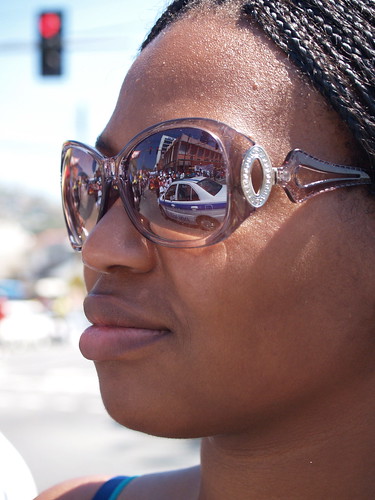

 On Tuesday night I felt inspired to begin the demolition process. Of course I was not knocking down walls or obliterating cabinets, rather than making a huge mess of the Program House. I need to know what is in every corner of the building in order to make a proper assessment of what needs to happen. Maybe I can learn more about the building’s history, maybe there are items that can be reused in another area, maybe there are unnecessary items taking up usable space. Not only will this digging be helpful in saving money if things are found which can be reused (whether it be paint or curtains or shelves) but it will ground this modern project in historical context for the building and the program. So I began the digging process in the kitchen. Besides empty bottles, old clothes and shoes, and lots of spider webs, I found a few place mats, a set of glass rectangles (maybe from the window slots), a Pepsi bottle from 2004, a wooden drying rack, and a dabla used for flipping Roti or busupshot. I also found two buckets of “Champaign White” paint under the sink. It looks like the cabinet wood is still good so they just need repainting and reorganization rather than complete replacing. This is good for the program financially and for me physically. This project has to remain practical.
On Tuesday night I felt inspired to begin the demolition process. Of course I was not knocking down walls or obliterating cabinets, rather than making a huge mess of the Program House. I need to know what is in every corner of the building in order to make a proper assessment of what needs to happen. Maybe I can learn more about the building’s history, maybe there are items that can be reused in another area, maybe there are unnecessary items taking up usable space. Not only will this digging be helpful in saving money if things are found which can be reused (whether it be paint or curtains or shelves) but it will ground this modern project in historical context for the building and the program. So I began the digging process in the kitchen. Besides empty bottles, old clothes and shoes, and lots of spider webs, I found a few place mats, a set of glass rectangles (maybe from the window slots), a Pepsi bottle from 2004, a wooden drying rack, and a dabla used for flipping Roti or busupshot. I also found two buckets of “Champaign White” paint under the sink. It looks like the cabinet wood is still good so they just need repainting and reorganization rather than complete replacing. This is good for the program financially and for me physically. This project has to remain practical. 
 Since then I’ve visited a local paint shop to get brochures of color palettes and prices, done a visual inventory of the local discount store for cheap solutions, and continued to clean. In the new-found bathroom behind the house, I found old mas costume pieces, build-it-yourself shelves, more fabrics, etc. I love discovering things!
Since then I’ve visited a local paint shop to get brochures of color palettes and prices, done a visual inventory of the local discount store for cheap solutions, and continued to clean. In the new-found bathroom behind the house, I found old mas costume pieces, build-it-yourself shelves, more fabrics, etc. I love discovering things!